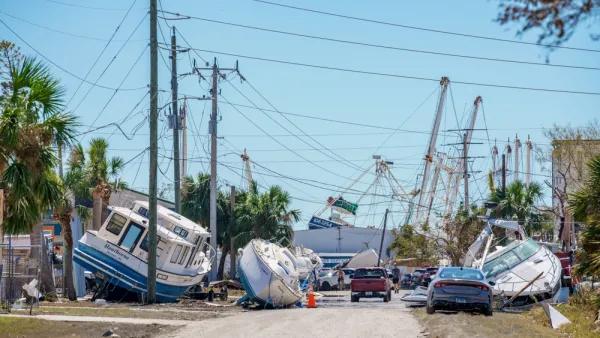One silver lining from Hurricane Sandy is that it proved the accuracy of the National Hurricane Center, an agency under the National Oceanic and Atmospheric Administration (NOAA) due largely to its hi-tech tools. Do you know what a 'dropsonde' is?
While the experts will debate as to whether New Jersey and New York were fully prepared for the landing of Hurricane Sandy on their shores Monday evening, Oct. 29, it is clear they were forewarned. What made the forecast so impressive was that Sandy was a truly complicated hurricane.
"It turned left when most hurricanes turn right. It maintained its strength even as it struck land. And ultimately, it joined forces with a winter storm", states NPR's Jon Hamilton on the audio tape (and recorded in the transcript).
Hamilton interviewed Sharan Majumdar, an associate professor of meteorology and physical oceanography at the University of Miami.
"The National Hurricane Center did a fantastic job, particularly with the track forecast and the intensity forecast as it was moving toward the Northeast", states Majundar.
"We're going to have a very, very large area that's affected by strong winds, storm surge, heavy rainfall, and inland flooding, and, in fact, even snowfall," forecaster James Franklin said in one of the center's numerous broadcasts to the public."
"One reason the forecasts were so good is that the models used to predict weather around the globe are more accurate now and run on much faster computers than they used to, Majumdar says."
"What that means is that we can run the global models at a much higher resolution," he says. "So in the same way that our TV sets are going more high-def, computer models of the globe are also becoming more high-def."
Regarding those 'dropsondes' - they in fact do what they somewhat sound they might to.
"All the computer models now get more and better data than they used to, Majumdar says. One source of these data is dropsondes, capsules dropped from an airplane into a hurricane. As they fall, they transmit a constant stream of weather data."
"The dropsonde data tend to improve hurricane forecasts by up to 30 percent," he says. "So there's been some real significant improvements to the track forecasts over the last 15 years or so through the deployment of these dropsondes."
The National Hurricane Center is a division under NOAA's National Weather Service.
All Things Considered also ran a related story on Wednesday afternoon (Oct. 31), "Is Climate Change Responsible For Sandy?" in which Robert Siegel interviews Martin Hoerling, research meteorologist at NOAA's Earth Systems Laboratory.
FULL STORY: High-Def Storm Models Yielded Accurate Predictions

Analysis: Cybertruck Fatality Rate Far Exceeds That of Ford Pinto
The Tesla Cybertruck was recalled seven times last year.

National Parks Layoffs Will Cause Communities to Lose Billions
Thousands of essential park workers were laid off this week, just before the busy spring break season.

Retro-silient?: America’s First “Eco-burb,” The Woodlands Turns 50
A master-planned community north of Houston offers lessons on green infrastructure and resilient design, but falls short of its founder’s lofty affordability and walkability goals.

Test News Post 1
This is a summary

Analysis: Cybertruck Fatality Rate Far Exceeds That of Ford Pinto
The Tesla Cybertruck was recalled seven times last year.

Test News Headline 46
Test for the image on the front page.
Urban Design for Planners 1: Software Tools
This six-course series explores essential urban design concepts using open source software and equips planners with the tools they need to participate fully in the urban design process.
Planning for Universal Design
Learn the tools for implementing Universal Design in planning regulations.
EMC Planning Group, Inc.
Planetizen
Planetizen
Mpact (formerly Rail~Volution)
Great Falls Development Authority, Inc.
HUDs Office of Policy Development and Research
NYU Wagner Graduate School of Public Service




























